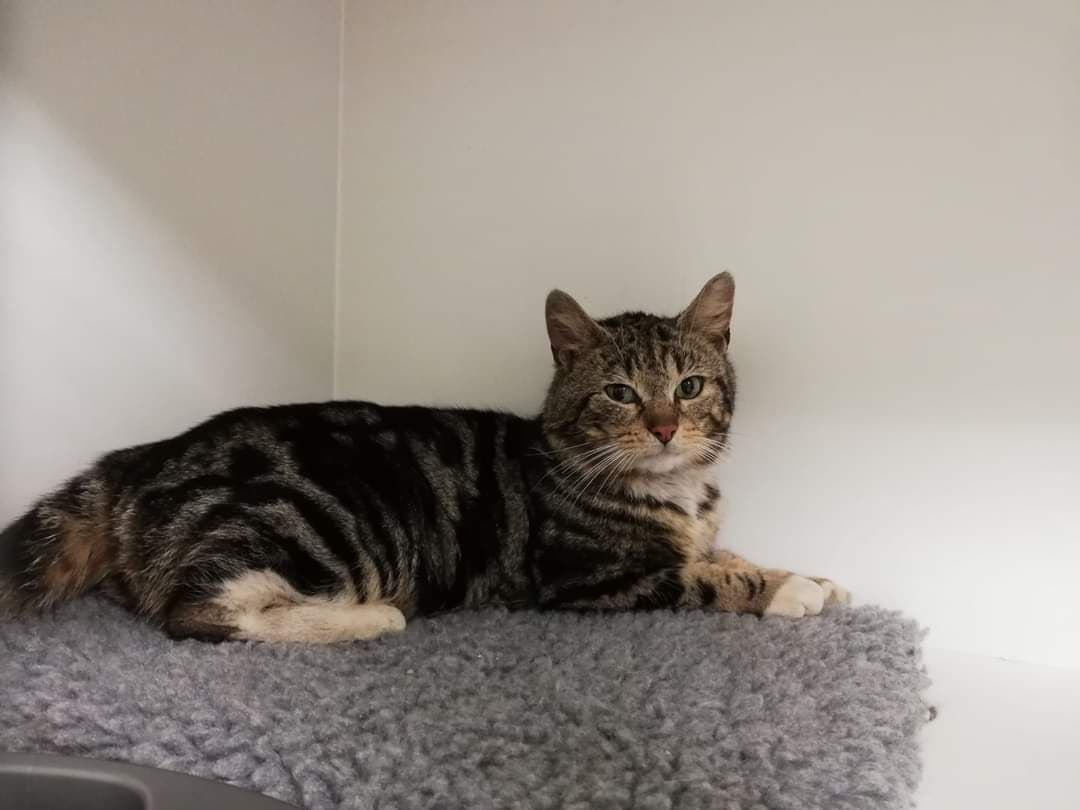How to Spot a Cat in Need of Help
How to Spot a Cat in Need of Help
Have you found a stray cat, or is it just a cheeky pet? At this time of year the number of reported ‘stray’ cats increases daily- this could be because there are genuinely more around or just that people are spending more time outdoors.
When we talk of stray cats, we categorise each into one of three groups and we ask a number of questions to try to identify whether it is a cheeky neighbour cat, a stray cat in need or a feral cat. So, what’s the difference?
How to Spot a Cheeky Neighbour Cat
Your cheeky neighbour cat will generally be friendly, often bolshy and will come looking for tasty bits of extra food. Their appearance will be generally clean and may have slight dirty paws and with the exception of nervous pet cats (who generally don’t approach strangers) will approach freely on the mooch.
How to Spot a Stray Cat
Stray cats are generally very unkempt. Dirty all over and more often filthy, as they have stopped cleaning themselves through depression and lack of care. They often appear unwell or sick looking and matted. They look tired and worn and often will sport various injuries or ailments. Stray cats are NOT feral cats. Stray cats were at one time a family pet and for whatever reason, whether abandonment or getting lost, they have found themselves without a home or someone to care for them and struggle with life on the streets. If you are approached or see a possible stray it is likely they are looking for help so, please don’t ignore them. Also fearful stray cats can be rehabilitated successfully to enable them to once again live a comfortable life. Please remember this next time you see a “dirty wee” cat at the bottom of your garden – they are far from happy.
The myth that all cats eventually turn feral is also, in the most part, and certainly in our experience, untrue. Stray cats over time, through lack of social interaction with people or due to the encounters they have while living on the streets, makes them fearful of humans. In the case of un-neutered male cats in particular, once they are brought in, neutered and given time to relax and settle in, they are often transform into the sweetest, most loving little cats you could ever wish to meet. So please, before you label a cat as a Feral and restrict its immediate options, consider all the facts and ask for help.
How to Spot a Feral Cat
Lastly, the feral grouping. You are highly unlikely to see feral cats during the day when people are around. They will keep their distance, are very flighty around people and will appear generally very clean and tidy unless they are sick. You will never coax a feral cat to you, a stray yes, but not a feral cat. We use humane traps for feral cats to catch them, have them neutered and then returned to site. Commonly referred to as TNR or Trap Neuter Release.
Generally speaking cats who fall into the cheeky neighbourhood cat & feral cat group very seldom need your help (if neutered) . Stray cats on the other hand rely on you, especially when sick or injured as that is often when they appear most frequently.

What to Do If You Think You’ve Found a Stray Cat
If you find you have a friendly though very grubby or thin new addition, then consider doing the following:
- The first thing to do is put its details on as many lost and found sites as you can and contact all local rescues to let them know you have found a cat.
- Put notices in your local shop, notice boards and go door to door asking residents in the area.
- Lost cats are generally within ½ mile of their own home so do make sure as a minimum you have gone door to door at least 3 streets in any direction from your home.
- Also, place a paper collar around the neck of the cat you have found if it will allow you to approach. A paper collar is a strip approx 2cm wide from a sheet of A4 paper which you secure firmly but loosely around the cats neck with Cellotape. You should be able to get 2 fingers between the cats neck and the paper collar.
- Write on the piece of paper – “ I believe this to be a lost cat if your cat please call me on ###### “
- If the cat already wears a collar an option is to create a paper tag in the same way and attach it to the existing collar with the same information. You should leave the paper collar on for at least 7- 10 days.
- Continue to monitor and check lost and found websites and notify rescue’s if you find the owner.
- If the cat you have found is injured and in need of veterinary care due to an open wound or very poor condition then contact the SSPCA or your local rescue as soon as possible.
- If you are able to catch said cat and have a secure cat carrier you can also take the cat to a local vet to be scanned for a microchip which will hopefully allow the cat to be returned home much quicker.
DO NOT – just pick up said cat, keep it indoors or take and leave with a rescue immediately without having attempted the steps above first.
If you believe you have a genuine stray call for advice if the paper collar technique, speaking to neighbours and local notices have resulted in no information about a potential owner.
Please be aware that at this time of year a large number of people still put their cats out on the street when they go on holiday for a couple of weeks so we always suggest you keep trying for 2 – 3 weeks before calling rescue. The exception to this obviously being if they are clearly sick or injured or have a litter of kittens so that we can ensure all get appropriate veterinary care, nutrition and medication.
Typically 1 out of every 3 cats we have reported to us belongs to a neighbour within 2 – 4 streets from the finders location. So always ensure you cover a reasonable area with your enquiries. In fact some have been from the same street or half a dozen doors away!! Dealing with these calls wastes valuable costly resources, time and ultimately upset and anxiety for both the cat and owner needlessly.
Too often we hear “but, it’s in the same garden all night”. But, is it really? When you sleep at night, they can be off doing lots of things, even going home again. Cats are, after all, nocturnal animals. So, yet another reason to make thorough local enquiries. If these steps aren’t taken then don’t be surprised if you are advised to do so before any action is taken. You wouldn’t like it if we lifted your pet cat would you? Please consider other owners in your decisions and how you would feel if it was your cat that someone had carted away to a strange place without you knowing why and when you would see your furry companion again. It is always wise to let people know you have found a cat in case it is lost, just don’t be hasty in your actions – but always be neighbourly.
By learning how to spot those stray cats genuinely in need, we hope by us all working together we can spend more time working to help these sick street cats, rather than wild and often costly, fruitless chases for neighbours cats that could have been very quickly resolved if the finder had asked further afield than over the fence!
